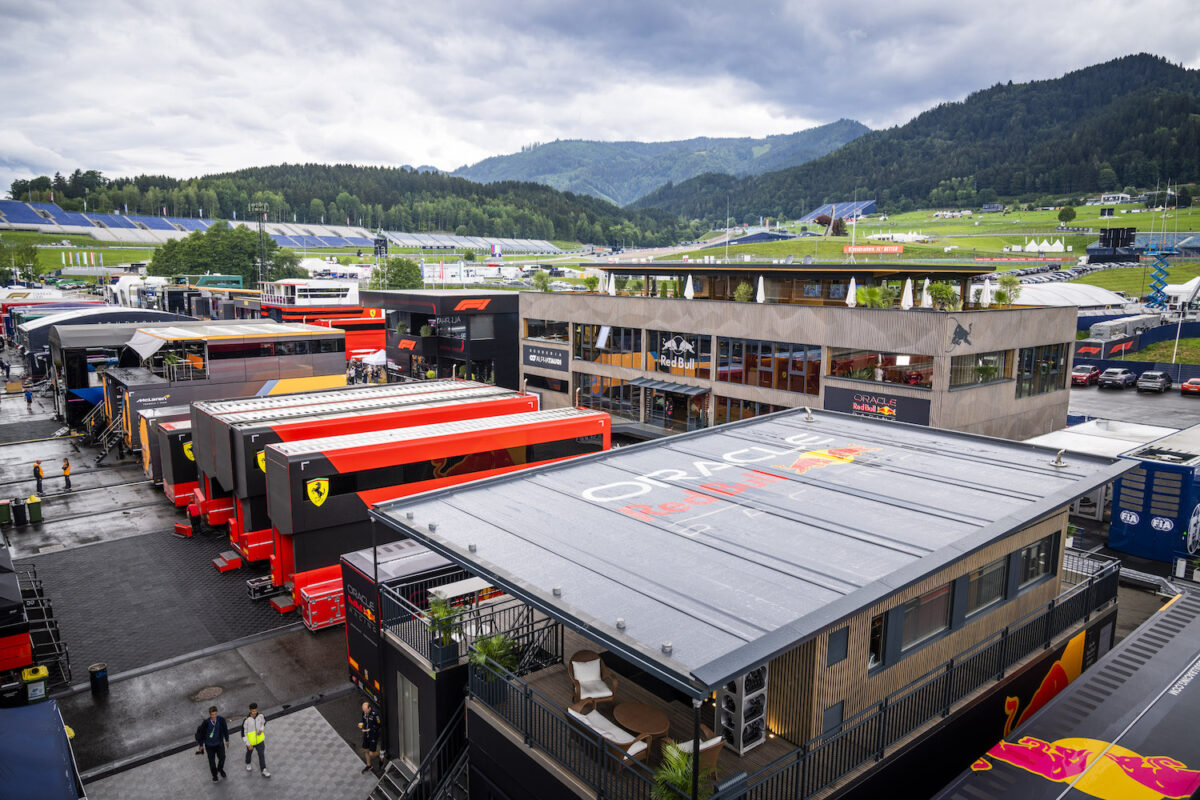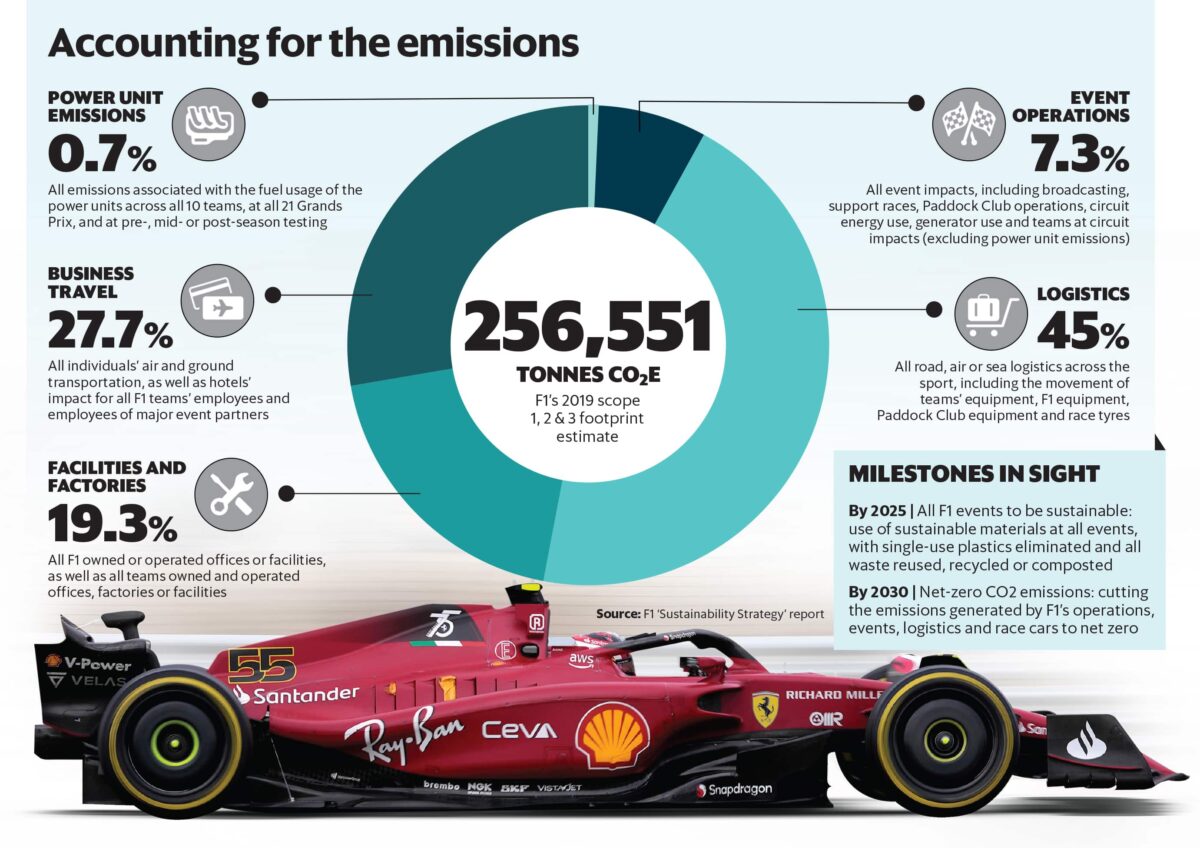
One clever fan has come up with "the most optimal Formula 1 calendar", which should help solve one of the sport's most glaring issues: its enormous carbon footprint.
Last year, I wrote a story about how the 2023 Formula 1 World Championship's race schedule was inefficient and terrible for the planet. For a sport that claims it wants to be carbon neutral by 2030 and spruiks its sustainable bona fides wherever it can, the crisscrossing of the globe that the 2023 calendar necessitates seems to contradict Formula 1's ambitions.
However, one F1 fan has tried to remedy this. Off The Grid, a popular YouTube channel covering F1 news, has come up with a more efficient race schedule that should, in theory, save tens of thousands of tonnes of CO2 emissions. It's effectively solving a giant "travelling salesman problem".
Using the 2023 calendar as a starting point (keeping in mind that the race schedule tends to change every year, with different races joining and leaving the calendar), Off The Grid rearranged the races so that rather than travelling 132,165 kilometres around the year – as the current schedule does – F1 would only have to travel 56,441kms, a 57% reduction.
Off The Grid's race schedule still starts in Bahrain, as the real-life 2023 season did, but quickly deviates from real life, instead ticking off all the Middle Eastern and European races in one fell swoop. It then heads to North America, then to Asia. Australia is the penultimate race and then the season ends in Brazil.
It's a great start, but it's not perfect. For one, it doesn't take into account how F1 teams tend to head back to their factories or home bases in between races, nor does it account for the movements of drivers, staff and so on.
As one commenter, James Shields, pointed out, it's also not that simple, as "the amount of travel time and set up time between races means you can't just dismantle all the F1 equipment and set it up at the next race."
"The majority of equipment is shipped by sea/road, which means there need to be several sets of equipment moving around the world, arranged so that everything needed for a race arrives at the correct venue with enough time to complete setup."
James Shields
"As the heavy equipment is the slowest moving part, and the personnel can relatively easily travel in for the race weekend, the most optimal schedule might not put the nearest races adjacent to each other."
RELATED: Formula 1’s Cheapest & Most Expensive 2023 Race Tickets Revealed
 F1 teams' motorhomes at the 2022 Austrian Grand Prix. Image: Red Bull
F1 teams' motorhomes at the 2022 Austrian Grand Prix. Image: Red Bull
"For example, the American races are all so spread out that having them all one after the other might require having several sets of heavy equipment on the American continent. Spreading the American races over the season would allow one set of equipment to start in Canada and work its way down the continent and the teams just fly in for the races. Since they would have gone back to base anyway, that's not really adding any extra travel."
He continues: "As far as I know, there are currently five sets of heavy equipment. I think it might be more efficient to try to reduce that to 3 sets, one in America, one in Asia/Australia, and one in Middle East/Europe, and work out the most efficient schedule for each set and have the people fly in to meet the equipment."
"The other thing that could reduce carbon footprint and costs is limiting the amount of equipment teams can fly in to each race. I believe that currently the cars are flown from the team factory to each race. If the bulk of the cars were shipped with the heavy equipment between races, and teams were allowed to fly a set amount of upgrades to each race, limited by weight, that would reduce the amount of costly (both in terms of expense and in emissions) air freight," Shields concludes.
Still, Off The Grid's adjusted calendar is still a good start.
How much emissions does Formula 1 produce? F1's emissions visualised, using data from the most recent F1 Sustainability Strategy report. Image: Mint Lounge
F1's emissions visualised, using data from the most recent F1 Sustainability Strategy report. Image: Mint Lounge
According to F1's most recent Sustainability Strategy report, the sport emitted 256,551 metric tonnes of CO2 emissions in 2019. For comparison, that's twice as much as the four major North American sports leagues (the NBA, NHL, MLB and NFL) – combined.
Also according to that report, the single biggest contributor to F1's emissions was logistics, which represents a whopping 45%, which is why making the F1 calendar more efficient is such a big deal.
What's really interesting is that the cars themselves only represent 0.7% of emissions, which might seem counter-intuitive to any outsiders. It's also why F1's goal to race on sustainable fuels, although worthy, will barely make a dent in the sport's emissions.
The post The Solution To Formula 1’s ‘Inefficient & Terrible’ Race Schedule appeared first on DMARGE.


0 Commentaires